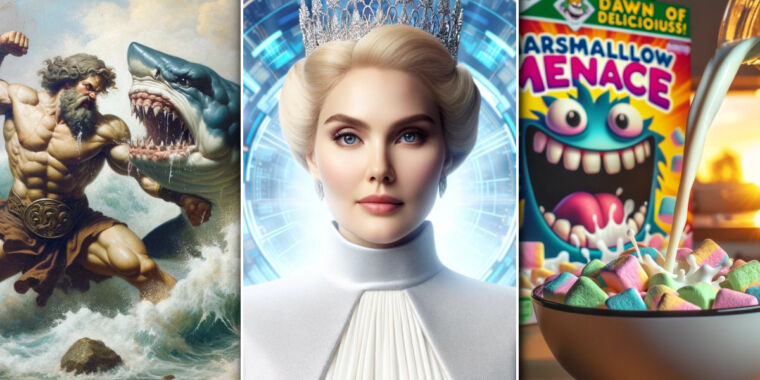In October, OpenAI introduced its latest AI image generator—DALL-E 3—to a broader audience, including ChatGPT subscribers. The capabilities of DALL-E in media creation tasks have surpassed previous expectations, eliciting both admiration for its intricate outputs and concern for its implications. While the concept of AI-driven technology in science fiction has long been anticipated, witnessing machines redefine the creative landscape in real-time evokes a different reaction.
Ars Technica’s creative director, Aurich Lawson, acknowledges the transformative potential of AI in image generation, emphasizing its evolution from a mere novelty to a valuable tool with impressive visual acuity and practical utility.
The emergence of AI image synthesis hints at a future where creative processes heavily involve machines capable of replicating diverse artistic styles and formats. The fluidity and adaptability of media creation are reaching unprecedented levels, raising questions about the rapid advancements in AI image synthesis and their implications for artists moving forward.
Evolution through AI Self-Improvement
DALL-E 3 operates on a neural network model utilizing latent diffusion, a technique that progressively refines images from noise based on user-provided prompts. Collaborating with ChatGPT, DALL-E 3 transforms text descriptions into vivid visual representations, showcasing a seamless fusion of AI capabilities for interactive art generation.
The training methodology of DALL-E 3 involves enhancing prompt fidelity through synthetic image captions generated by GPT-4V, a visual variant of the GPT-4 model. This approach significantly improves the accuracy and detail of prompts, enabling DALL-E 3 to faithfully render the intended content from written instructions.
Moreover, DALL-E 3 excels in rendering text with precision, a notable advancement over previous models, attributed to the detailed captioning provided by GPT-4V. Despite some imperfections in text generation, such as occasional character errors, the model’s ability to process textual prompts showcases significant progress in AI-driven image synthesis.
Implications for Artists
The integration of AI in art creation has sparked diverse reactions within the artistic community. While some view AI as a means of enhancing creative expression and accessibility, others express concerns regarding its potential impact on originality and artistic integrity.
Critics, like illustrator Gwendolyn Wood, raise ethical concerns regarding AI’s reliance on scraped copyrighted works for training, highlighting the contentious issue of plagiarism and the ethical implications of AI-generated art. The debate surrounding the authenticity and value of AI art underscores the complex relationship between technology and creativity.
However, proponents of AI art, such as artist Claire Silver, emphasize the transformative potential of AI in enabling new forms of artistic expression and accessibility, particularly for individuals facing physical or mental limitations. The democratizing effect of AI art opens avenues for diverse creative exploration and collaboration, challenging conventional notions of artistic production.
Future Prospects and Societal Implications
As AI continues to advance in art generation capabilities, the role of human creators in the creative process faces new challenges and opportunities. The potential for AI to streamline artistic workflows and expand creative possibilities raises questions about the future landscape of artistry and the evolving dynamics between humans and machines.
While concerns persist regarding job displacement and the commodification of art through AI, the collaborative potential between human artists and AI tools presents a paradigm shift in creative expression. The fusion of human creativity with AI-driven capabilities may redefine traditional artistic roles, empowering individuals to leverage AI as a tool for amplifying their artistic visions.
In navigating the complexities of AI artistry, the balance between technological innovation and human ingenuity remains pivotal. As AI art continues to evolve, addressing ethical, legal, and societal implications will be crucial in shaping a harmonious coexistence between human creativity and artificial intelligence in the realm of artistic expression.






